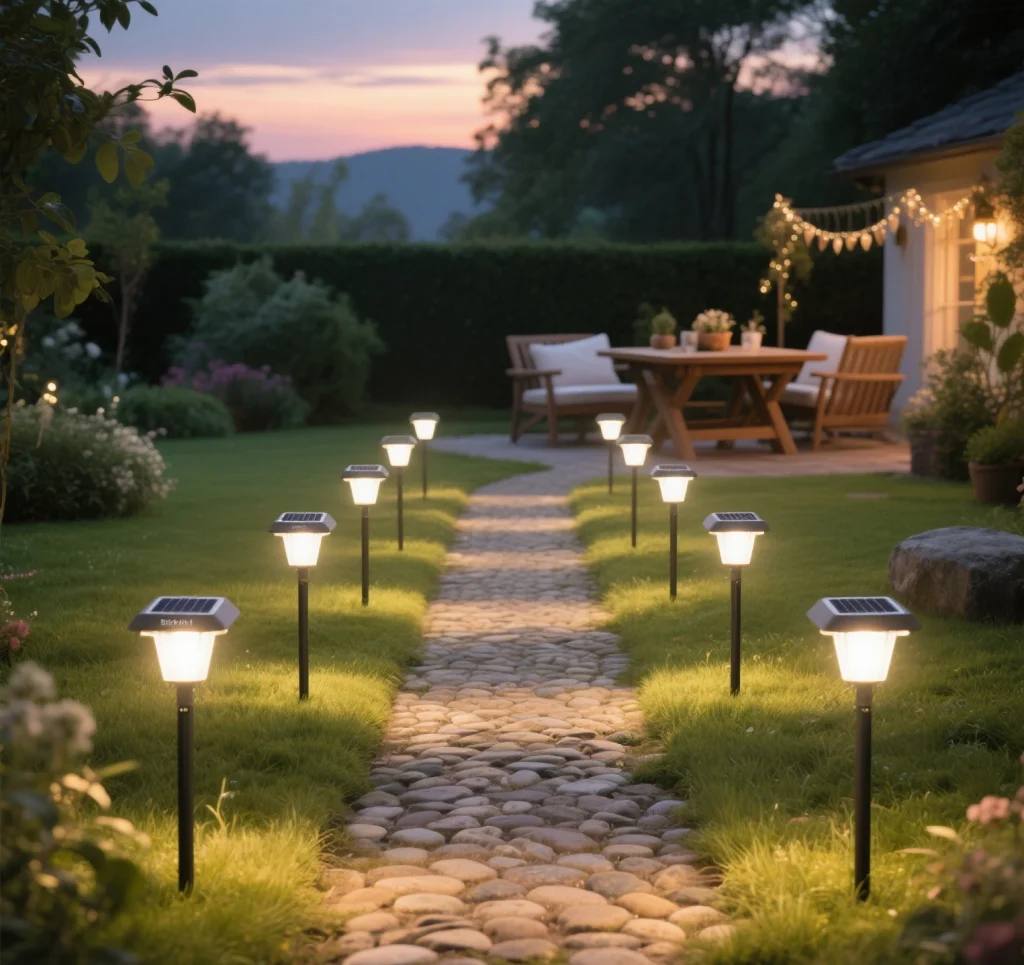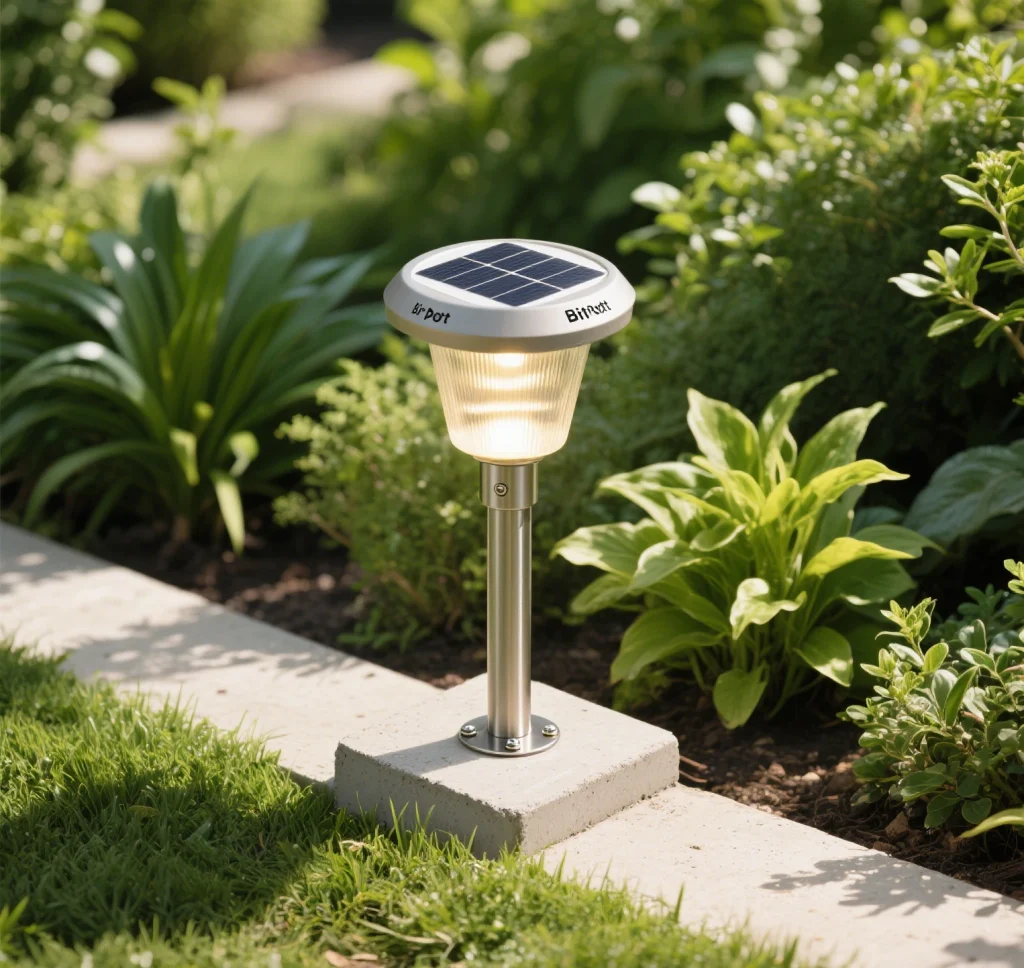The adoption of solar panels for powering solar-powered lights has surged as individuals and businesses seek energy-efficient lighting solutions that reduce electricity costs and environmental impact. A common question is: How many LED lights can a single solar panel power? The answer depends on several factors, including the panel’s wattage, battery capacity, light efficiency, and environmental conditions. This article explores the mechanics of solar lighting systems, the variables affecting their capacity, and practical strategies to maximize their output, providing a comprehensive guide for those interested in sustainable outdoor lighting.

Understanding Solar Panel and Lighting Systems
To determine how many solar powered lights a solar panel can support, it’s essential to understand the components of a solar lighting system. A typical setup includes a solar panel, a rechargeable battery, LED lights, and often a light sensor or motion sensor for automated operation. The solar panel, made of photovoltaic cells, converts sunlight into electricity via the photovoltaic effect. This electricity charges the rechargeable battery, which stores energy to power the lights at night.
The capacity of a solar panel is measured in watts (W), indicating how much power it can generate under ideal conditions. For example, a 100W solar panel can produce 100 watt-hours of energy per hour of direct sunlight. The number of LED lights it can power depends on the lights’ wattage, the battery’s storage capacity, and the hours of operation required. High-efficiency LED lights, commonly used in solar street lights and solar garden lights, consume less power, allowing a single panel to support more lights.
Factors Determining How Many Lights a Solar Panel Can Power
Several variables influence the number of solar powered lights a solar panel can sustain:
1. Solar Panel Wattage
The wattage of a solar panel directly affects its energy output. A 10W panel might generate 40-60 watt-hours daily with 4-6 hours of sunlight, while a 100W panel could produce 400-600 watt-hours. For instance, a 10W panel can power one or two 3W LED lights for 8 hours, while a 100W panel could support ten 3W lights or fewer higher-wattage lights, such as those used in solar street lights.
2. Battery Storage Capacity
The rechargeable battery stores energy for nighttime use. Its capacity, measured in ampere-hours (Ah) or watt-hours (Wh), determines how long the lights can operate. A 12V, 50Ah battery stores approximately 600Wh, enough to power ten 3W LED lights for 20 hours. Larger batteries, common in solar lighting systems for off-grid lighting, allow more lights or longer operation.
3. Light Efficiency
LED lights vary in efficiency, measured in lumens per watt (lm/W). High-efficiency LED lights (100-150 lm/W) produce more light per watt, enabling a solar panel to power more lights. For example, a 5W LED light with 120 lm/W delivers 600 lumens, sufficient for solar pathway lights, while a less efficient 10W light might produce the same brightness, reducing the number of lights a panel can support.
4. Sunlight Availability
The amount of solar radiation a solar panel receives depends on geographic location, season, and weather. Areas with 5-6 hours of direct sunlight daily maximize solar panel efficiency, while cloudy regions may reduce output by 10-30%. Monocrystalline solar panels, known for higher solar panel efficiency, perform better in low-light conditions, supporting more solar powered lights.
5. System Losses
Energy losses occur during conversion, storage, and transmission. Solar panels typically operate at 15-20% efficiency, and rechargeable batteries lose 10-20% during charging and discharging. Maximum Power Point Tracking (MPPT) controllers can minimize losses, ensuring more energy is available for LED lights.
Calculating the Number of Lights
To estimate how many solar powered lights a solar panel can power, follow these steps:
- Determine Panel Output: Calculate the daily energy production. A 50W solar panel receiving 5 hours of sunlight produces 250Wh (50W × 5h).
- Account for Losses: Assume 20% system losses, reducing usable energy to 200Wh (250Wh × 0.8).
- Calculate Light Consumption: If each LED light consumes 5W and operates for 8 hours, it requires 40Wh (5W × 8h).
- Divide Energy by Light Needs: A 50W panel can power 5 lights (200Wh ÷ 40Wh = 5).
For example, a 100W solar panel with 5 hours of sunlight and a 100Ah battery could power approximately 12-15 3W solar garden lights or 5-7 10W solar street lights for 8 hours, assuming minimal losses and efficient LED lights.
Performance in Various Conditions
Cloudy and Overcast Days
Cloudy skies reduce solar radiation, lowering solar panel output to 10-25% of optimal levels. Monocrystalline solar panels and MPPT controllers help maintain performance by optimizing diffuse light capture. A larger rechargeable battery ensures solar powered lights function during extended cloudy periods, critical for solar street lights in urban settings.
Rain and Snow
Light rain allows solar panels to charge via diffuse light, and rainfall cleans panels, enhancing solar panel efficiency. Snow can block sunlight, but angled solar panels shed snow, and cold temperatures improve photovoltaic cell performance. For solar pathway lights, these features ensure reliability in diverse climates.
Shaded Environments
Shade from trees or buildings reduces solar exposure, impacting the number of LED lights a panel can power. Bifacial solar panels, which capture light on both sides, and microinverters, which optimize individual cell output, mitigate shading effects, making them ideal for solar garden lights in partially shaded areas.

Maximizing the Number of Lights Powered
To increase the number of solar powered lights a solar panel can support, consider these strategies:
- Optimize Panel Placement: Position solar panels in unshaded, south-facing locations (in the Northern Hemisphere) to maximize solar exposure. Tilt panels to match the local latitude for optimal sunlight capture.
- Use High-Efficiency Panels: Choose monocrystalline solar panels for better solar panel efficiency, especially in low-light conditions, to generate more energy for LED lights.
- Select Efficient Lights: Opt for high-lumen LED lights (100-150 lm/W) to maximize brightness per watt, allowing more lights per panel.
- Enhance Battery Capacity: Use a rechargeable battery with sufficient capacity to store energy for nighttime or cloudy days, supporting more solar powered lights.
- Incorporate Advanced Technology: Employ MPPT controllers or smart inverters to reduce energy losses and improve system efficiency.
- Regular Maintenance: Clean solar panels to remove dust or snow, ensuring maximum solar radiation absorption. Rainfall often helps, but manual cleaning may be needed in dry areas.
Benefits of Solar Powered Lighting
Solar powered lights offer significant advantages, making them ideal for eco-friendly lighting. They reduce electricity costs and carbon footprints by eliminating grid dependency. Their energy-efficient lighting design, often paired with motion sensors, minimizes energy waste. Easy installation without wiring makes them perfect for off-grid lighting in remote areas or as solar pathway lights in residential settings. Their versatility across weather conditions ensures reliable performance, whether for solar street lights or solar garden lights.
Addressing Common Questions
A common misconception is that solar panels can only power a few LED lights. In reality, with proper sizing and efficient components, a single panel can support multiple lights, depending on wattage and battery capacity. Another question is whether solar powered lights are viable in low-sunlight regions. While output decreases, diffuse light and advanced solar lighting technology ensure functionality, making them suitable for diverse environments.
The Future of Solar Lighting
Advancements in solar lighting technology are expanding the potential of solar powered lights. Emerging perovskite solar cells promise higher solar panel efficiency, while improved battery storage systems extend operational life. Smart inverters and MPPT controllers optimize energy use, enabling solar panels to power more LED lights. These innovations will make solar powered outdoor lights more efficient and accessible, supporting the global shift to renewable energy.
Conclusion
The number of solar powered lights a solar panel can power depends on its wattage, rechargeable battery capacity, LED light efficiency, and environmental conditions. By using monocrystalline solar panels, high-efficiency LED lights, and technologies like MPPT controllers, users can maximize the number of lights supported. Solar powered lamps offer a sustainable, cost-effective solution for eco-friendly lighting, reducing energy costs and environmental impact. Whether for solar street lights or solar garden lights, these systems provide reliable illumination, paving the way for a greener future.


Leave a Reply